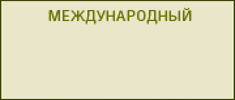Journal archive
The issues of theory |
|
|
In the article the author carries out a deep analysis of the two fundamental economic categories: the invisible hand» of the market and competition, — thus accentuating the problems of intercon¬nection between micro- and macroeconomies, competitors' and public convergence of economic interests. Arguing for the differentiation between the invisible hand» of the market as a macroregulator of economy and competition as a regulator of economic relations on the microlevel, the author defines the invisible hand» of the market as a competition-independent data structure that gives macrodata saturation to a competitive mechanism. |
|---|---|
Industry competition |
|
|
Success of insurance business in developed countries is to a considerable degree determined by a variety of competing subjects in insurance markets. There is competition not only among stock insurers but also among joint-stock and mutual companies as well as among insurance companies in public and private spheres. The article studies mutual insurance organizations and their role in the insurance market. |
|
The presented material contains topical data on congress activity in Moscow, shows main factors contributing to the development of congress activity in Russia and hindering it, analyzes com¬petitive capacity of national professional congress organizers in the international MICE-industry market. |
Teaching materials |
|
|
The submitted materials — a set of tasks (practical work) — are aimed at solidifying students' knowl¬edge on the «Firm and Market Theory: Discussions and Historical Development topic which intro¬duces the «Theory of Branch Markets» course. The course is held in the Higher School of Economics for a Bachelor Degree in Economics and is an integral part of the professional cycle in the educational program for an economist. The tasks are based on students' general knowledge of Microeconomics, Introductory Sketch of the Game Theory, History of Economic Thought. |
Competitive Strategies and Tactics |
|
|
The article studies a Gazel-firm phenomenon (companies that have been showing fast and steady growth for a long period of time). The author reveals peculiarities of their development and reasons for deviation from general tendencies that are typical of similar companies in developed economies. The article contains specific examples and the results of entrepreneurs' questionnaire answers that show reasons for exponential growth of Gazel-firms. |
Industry competition (the market of educational services) |
|
|
The article dwells on differences in approaches of Russian antimonopoly bodies and the Expert Educational Association to competition among HEIs. Emphasizing the change in the study paradigm of competitive relations in the sphere of education, the author reveals anticompetitive character of norms and institutions, examines main indicators for institutional discrimination of HEIs. |
|
In this article author describes the correlation between quality of educational services and competi¬tiveness of university. Author shows different universities logics of functioning in budget sector of edu¬cation and in the educational market. Author exposes ambiguity of category «competitiveness of university*. Considering the relations of public education accreditation as a market, author describes the positioning strategies of accreditation organizations and notes the need for using a fundamentally new tools to ensure quality of educational services. |
Competitive intelligence |
|
|
In the article the author defines the notion of «competitive intelligence, reveals the history of this activity in Russia, studies counterespionage specifics of a company security service, and analyzes staff peculiarities of a company competitive intelligence service. |



